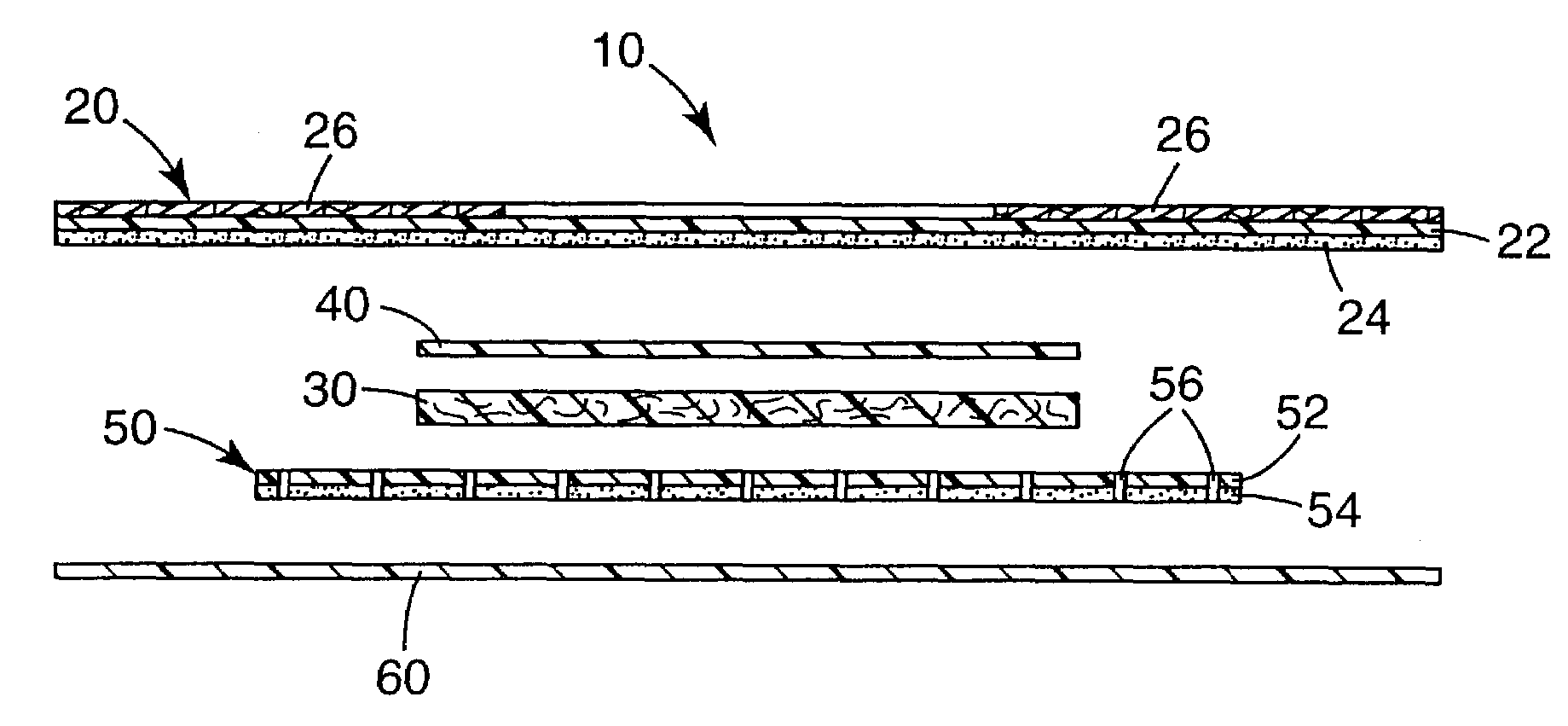Absorbent medical articles
a technology of absorbent medical articles and adhesive dressings, applied in the field of medical articles, can solve the problems of poor transparency, inability to observe the treatment state from the outside, and scab typically forms in and as part of the pad, and achieve the effect of reducing the localized stretching of the backing layer
- Summary
- Abstract
- Description
- Claims
- Application Information
AI Technical Summary
Benefits of technology
Problems solved by technology
Method used
Image
Examples
Embodiment Construction
[0042]In the following detailed description of illustrative embodiments, reference is made to the accompanying drawings that form a part hereof, and in which are shown, by way of illustration, illustrative embodiments in which the invention may be practiced. It is to be understood that other embodiments may be utilized and structural changes may be made without departing from the scope of the present invention.
[0043]Medical articles, particularly wound dressings, of the present invention may advantageously remove excess exudate from a wound; maintain a moist wound environment; allow gas exchange so that oxygen, water vapor, and carbon dioxide can pass through the medical article; are thermally insulating to maintain the wound at body temperature. The medical articles may be impermeable to liquids and microorganisms to minimize contamination and infection; may be non-adherent to the wound so that no damage is done to the granulating tissue; and may minimize the need to cleanse the wo...
PUM
 Login to View More
Login to View More Abstract
Description
Claims
Application Information
 Login to View More
Login to View More - R&D
- Intellectual Property
- Life Sciences
- Materials
- Tech Scout
- Unparalleled Data Quality
- Higher Quality Content
- 60% Fewer Hallucinations
Browse by: Latest US Patents, China's latest patents, Technical Efficacy Thesaurus, Application Domain, Technology Topic, Popular Technical Reports.
© 2025 PatSnap. All rights reserved.Legal|Privacy policy|Modern Slavery Act Transparency Statement|Sitemap|About US| Contact US: help@patsnap.com



